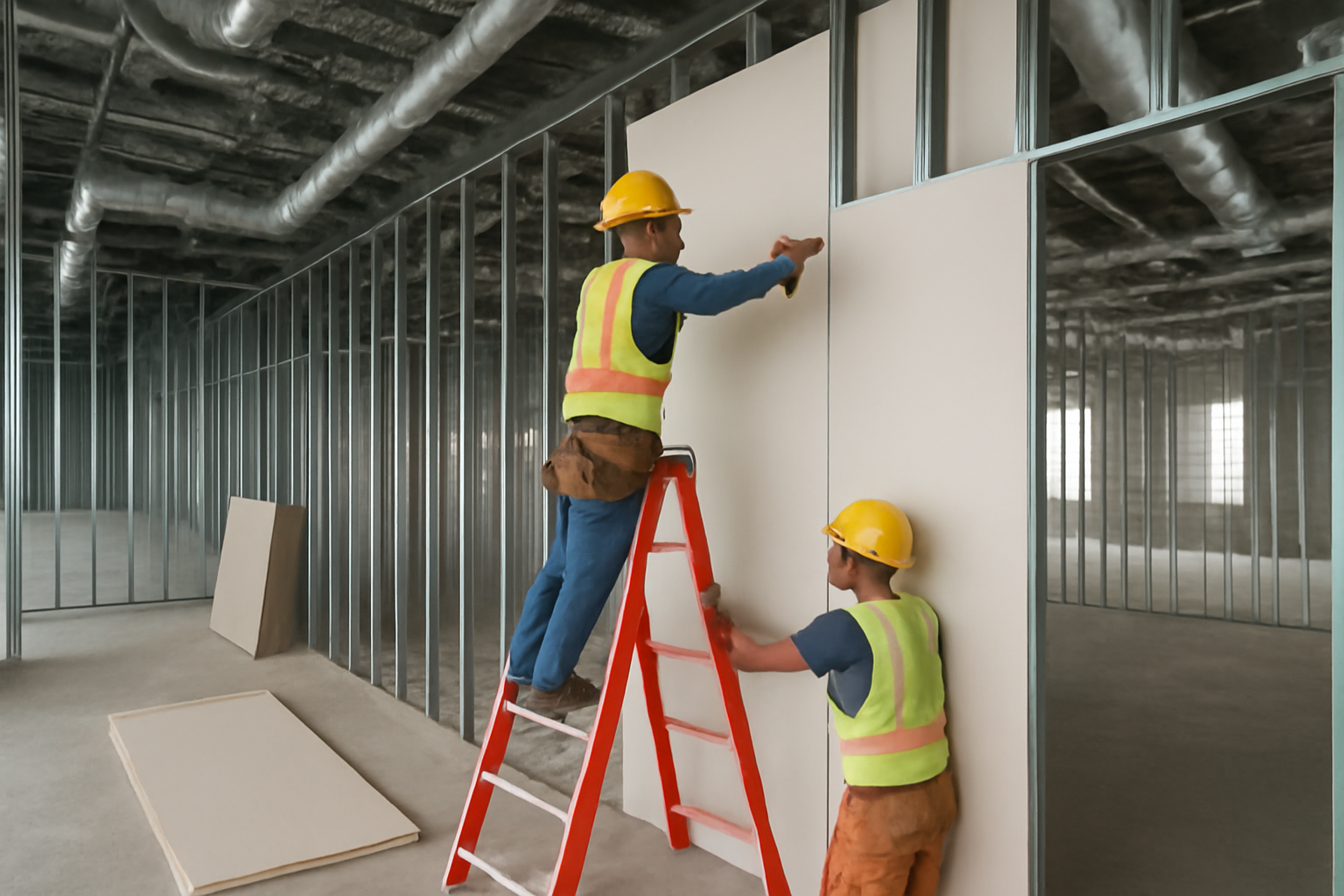
Estimating drywall solely by square footage is a widespread industry habit—but one that routinely leads to inaccurate budgets, missed scope, and project risk. While square footage provides a basic measurement of area, it fails to account for the full range of variables that affect real-world cost and constructability. For architects, engineers, and general contractors, understanding the limitations of square footage-only estimating is essential to avoiding cost surprises and ensuring more predictable project outcomes.
Drywall systems are complex, multi-variable assemblies. Using a single metric to estimate cost overlooks critical factors such as wall height, layout complexity, framing conditions, finishes, and labor productivity.
When drywall is estimated purely by square footage, the result is usually a false sense of cost accuracy and a greater reliance on contingencies. This leads to:
A more effective approach is to build drywall estimates from the ground up using assemblies and contextual factors. Active Estimating enables estimators to model objective quantities and subjective cost drivers together—capturing true scope while allowing for transparent adjustments over time.
Relying on square footage doesn't allow estimates to improve over time. With drywall estimating tools that track both estimated and actual production data, estimators gain insight into which variables consistently affect costs. This forms a feedback loop that improves the next bid, tightening margins and increasing trust.
In one large-scale tenant improvement project, the estimator priced the drywall at $4.50/SF based on historic averages. After construction, the actual labor came in at nearly $6.10/SF due to high wall height, multiple control joints, and a large number of angled corners. A post-mortem revealed that none of these were captured in the original square-foot takeoff, which caused a $300,000 budget overage. With modern tools, such risk can be significantly reduced.
Estimating drywall by square footage may seem efficient—but it often comes at the cost of accuracy, accountability, and profit. By embracing a layered, data-driven approach that includes assemblies, productivity modifiers, and actual field insights, project teams can generate drywall estimates that reflect the true scope of work. Active Estimating empowers teams to do just that—delivering precision where traditional methods fall short.
Contact Information:
Active Estimating
508 2nd Street, Suite 208
Davis
California
95616
Rich Schoener
richard@activeestimating.com
(877)
Schedule a personalized demo to see how Active Estimating can work for your specific needs.
